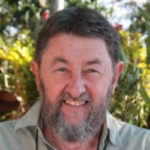It is a flag that can be admired and cherished, a beacon for reconciliation and beyond. It is, in the truest sense, an Australian institution.
Dealing with indigenous culture requires sensitivity and caution, so it is right that Ken Wyatt, the responsible minister, is taking his time over the delicate negotiations. over the aboriginal flag.
But the issue of who should have access to one of the most revered icons of the first Australians is an important one, and now that it has been raised, it must be treated seriously.
The aboriginal flag has become a symbol of many memorable events. It waved above the Uluru statement from the Heart, demanding the great aims of voice, treaty, truth, and it flew proudly with the Australian flag after Cathy Freeman’s gold medal win in 2000.
And it has been embraced not only by the overwhelming majority of indigenous Australians, but by the wider public. It is beautifully designed and instantly recognizable. The colours are entirely appropriate, whether or not you see them as the black skin, the red earth and the yellow sun or simply the ochre of traditional painting.
It is a flag that can be admired and cherished, a beacon for reconciliation and beyond. It is, in the truest sense, an Australian institution.
But there are strict limitations on how when, and where it can be used. The designer, Harold Thomas a Luritja-Wombai artist from Alice Springs,, passed on the reproduction rights to a firm called WAM Clothing, which looks after his commercial interests, an entirely proper arrangement but one which indigenous enterprises cannot profit without paying royalties which they simply cannot afford.
This is why the AFL, at the urging of its players and others, decided not to proceed with its plan to paint the design on the grounds during this year’s Sir Doug Nicholls indigenous round. The AFL could cover the cost, but knocked it back in solidarity with those who could not.
It should immediately be acknowledged that there is no problem with official use of the flag: it is frequently flown by all levels of government, at schools and public meetings and is freely available for individual display. WAM’s ukase only extends to those who want to profit from it.
But given that an increasing number of indigenous enterprises, especially the struggling start-ups, fall into that category, Wyatt has entered negotiations for the commonwealth to acquire some or all of WAM’s rights. There is no suggestion of compulsion, and nor should there be. But an amicable settlement would be in everyone’s interest.
It is not clear how far the process has gone, but it appears that progress can be reported. Ray Griggs, the chief executive of the National Indigenous Australians Agency, is sensibly keeping pretty quiet, but he seems at least cautiously optimistic.
Freeing the flag may not be as crucial as closing the gap or implementing Uluru, but it would be an important step towards the self-determination for which first Australian yearn. Wyatt’s efforts are to be applauded. He doesn’t get many wins, but bringing home this one would do much to vindicate his quiet approach. We will watch in hope.
Mungo MacCallum is a veteran political journalist and commentator. His books include Run Johnny Run, Poll Dancing, and Punch and Judy.
mungomccallum@staging-johnmenadue.kinsta.cloud

Comments
2 responses to “Freeing the indigenous flag”
In 2013 I moved this motion raising the ABORIGINAL FLAG in the Legislative Council of NSW, the country’s first and oldest parliament.
Motion by the Hon. SHAOQUETT MOSELMANE agreed to:
1. That this House notes that:
(a) New South Wales is the country’s most populated State, with the oldest Parliament and a proud history of inclusion,
(b) the Australian Aboriginal people represent 40,000 years of history, and are a people that are a fundamental part of Australian society,
(c) Parliaments across the nation proudly display the Aboriginal flags in their buildings and the New South Wales Legislative Assembly is no exception, and
(d) the Legislative Council, however, does not display the Aboriginal flag.
2. That this House:
(a) notes that the Legislative Council does not display within it the Aboriginal flag, and
(b) resolves to rectify this anomaly by displaying the Aboriginal flag in the Chamber of the Legislative Council.
It is hard to see how a reasonable person could possibly disagree with this.
But what actually happened in the end?